“If stories come to you, care for them. And learn to give them away where they are needed. Sometimes a person needs a story more than food to stay alive. That is why we put these stories in each other’s memories. This is how people care for themselves.” –Barry Lopez
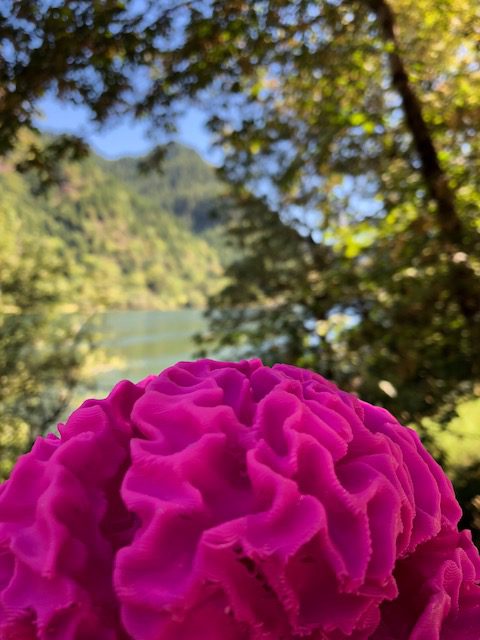
Along the Umpqua River…
We are deeply grateful for a busy season of travel, storytelling and neuroscience in classrooms and towns throughout western Oregon with Grande Ronde and Siletz tribal communities. We’re listening and learning from Native history, tales and languages – and through research, art making and changing brains..!
LEARN MORE: Noggin @ Siletz Valley!
LEARN MORE: Tres Escuelas en un Día!
LEARN MORE: Brains are xumxum @ Willamina
LEARN MORE: Noggin + Storytelling + Song @ Siletz Valley

Last week at the southern Oregon coast…
Outreach works when you go places, and meet people where they are. Twitter, another “scitalk” conference for academics, or bringing select community members to campus only gets you so far – and programs aimed at those with money and means might please campus administrators, but won’t expand opportunity, or address issues of inequality regarding access and representation.
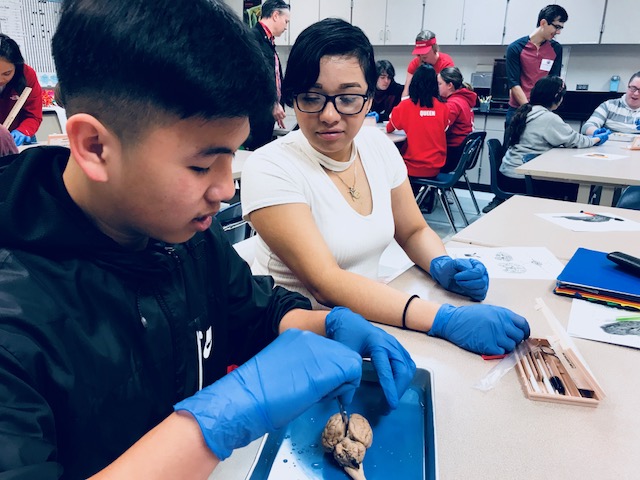
Sometimes you volunteer to offer your own stories, and listen respectfully to those that come to you…
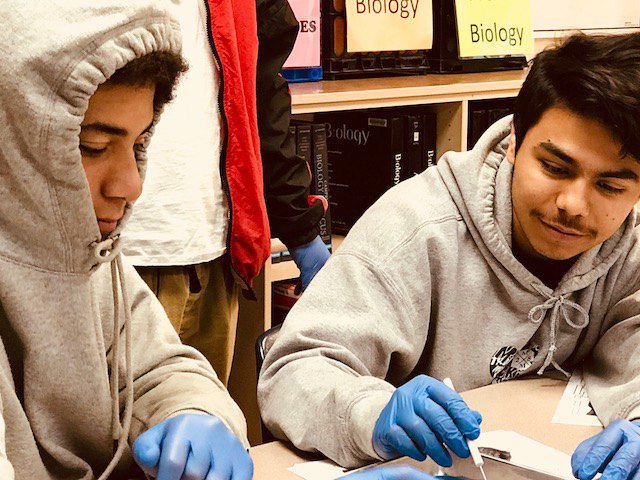
During a recent visit to Fort Vancouver High School, we spoke with Biology teacher James Cederstrom about Native outreach. Thanks to support from the Spirit Mountain Community Fund and the Oregon Pacific Area Health Education Center (OPAHEC), we’ll bring twelve NW Noggin volunteers studying neuroscience and art to both Lincoln County and Willamina School Districts October 8 – 11 to make connections between figures in Grande Ronde and Siletz tribal stories (including Coyote, Crow and Grizzly) and their relevant neuroanatomy…
LEARN MORE: Synapses & Stories: Coyote, Grizzly & their Brains!
LEARN MORE: Synapses, Stories & Song!
LEARN MORE: Trap Squad!

Photo credit: Wisdom of the Elders
James’ auntie is a celebrated tribal storyteller! He shared our Noggin website, and we were generously invited to join her on the banks of the Rogue River in southern Oregon…
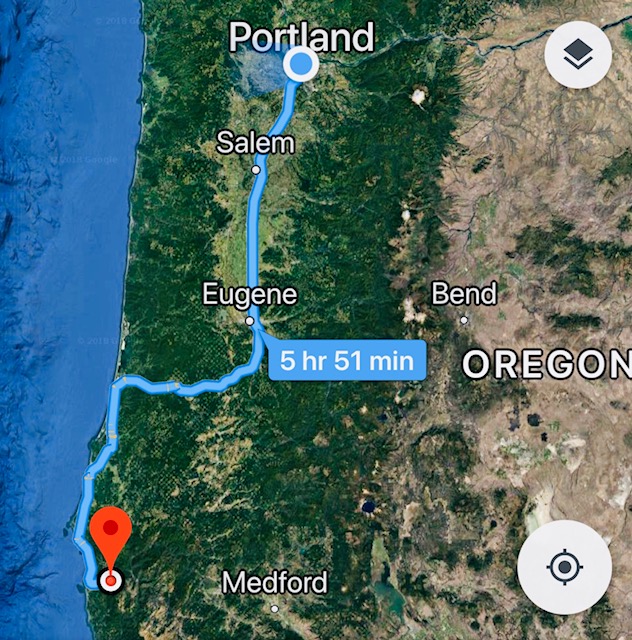
Esther Stutzman organizes this annual gathering for young Native Americans, now in its 42nd year, and tells traditional Coos and Kalapuya stories. She recently won a 2017 Oregon Governor’s Arts Award for Lifetime Achievement!
“Esther Stutzman is a native Oregonian and traditional American Indian storyteller of Kalapuya/Coos heritage. She learned the stories from her grandmothers and she has been telling stories of the ancient ways for more than 50 years. She is a descendant of the Headman Camafeema (Halo) of the Komemma/ Kalapuya and is an enrolled member of the Confederated Tribes of Siletz Indians.
Stutzman works with Title VII Indian Education and Arts in Education programs throughout Oregon as a cultural resource specialist with children as well as with teacher in-service programs.
She is the primary storyteller for Mother Earth’s Children, an American Indian theatre group that has performed for school assemblies and a variety of events and conferences for the past 42 years. She has been a long-time presenter for the Oregon Chautauqua History Series and is a recipient of several Oregon Historical Society Folk Life awards.”
LEARN MORE: Turtle Island Storyteller Esther Stutzman
LEARN MORE: Governor Kate Brown announces 2017 Governor’s Arts Awards
LEARN MORE: Governor’s Arts Awards, revived


We organized some seasoned outreach participants, including Ashley Keates from Psychology at Portland State University and Jacob Schoen, a recent PSU graduate who now works at the OHSU Oregon National Primate Research Center…
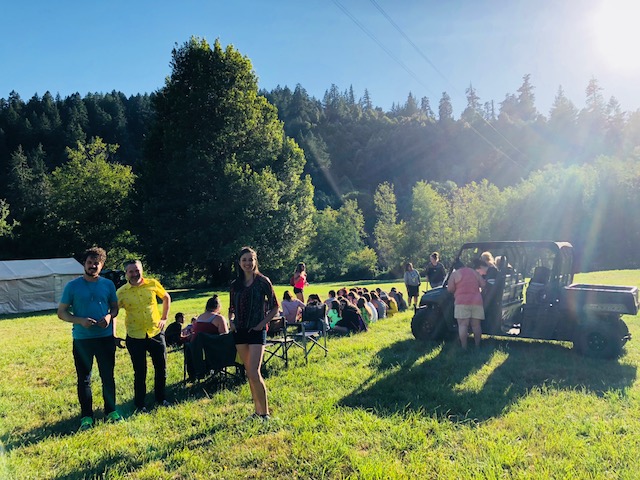
And last week we all made the 6+ hour drive to Mservey Meadows, a 19 acre floodplain between the storied Rogue River and Quosatana Creek, stopping briefly to introduce brains (and taste a few brews) at Arch Rock Brewing in Gold Beach (outreach can happen anywhere!)…

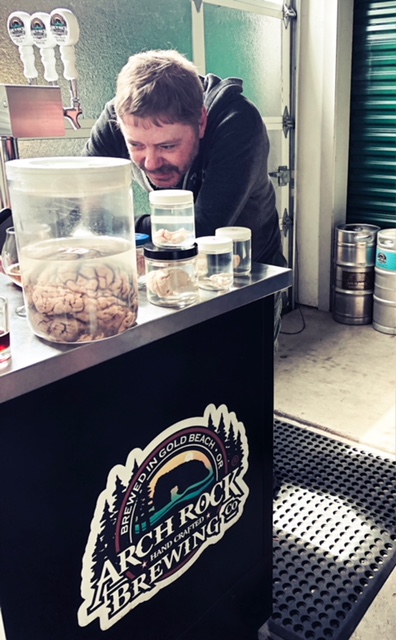
Arch Rock “head” brewer James Smith (with brains 
This rugged area was previously home to thriving Indian communities, who were decimated by new settler diseases, including smallpox (known as that kind of sickness). According to Charles Wilkinson, author of “The People Are Dancing Again,” a history of the Siletz, “for the tribes in the…confederation, the estimated population declined from approximately 52,000 to 4,200. In less than a century, they lost roughly 92 percent of their people.”
LEARN MORE: Smallpox and the Native American
LEARN MORE: ‘Virgin-soil’ epidemics devastate Native populations
LEARN MORE: The History of the Siletz Tribe of Western Oregon
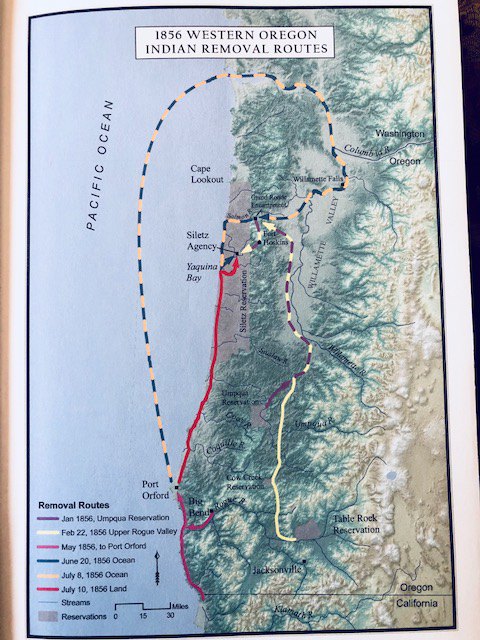
“You think your pain and your heartbreak are unprecedented in the history of the world, but then you read. It was books that taught me that the things that tormented me most were the very things that connected me with all the people who were alive, who had ever been alive.” ― James Baldwin
Tribes were also brutally beset by white settlers, gold miners and the American military during the mid-19th century, sometimes explicitly targeted for “extermination” and ultimately a forced removal from their own lands, including Mservey Meadows, following the Rogue River War.

“Who lives, who dies, who tells your story…” –Lin Manuel Miranda, “Hamilton“
LEARN MORE: Rogue River War of 1855-1856
It is an appalling, often unacknowledged history of dehumanization, genocide and one deadly 300 mile march to a new confining reservation in the United States, but it’s also a story of survival and resilience, well documented in Charles Wilkinson’s powerful work. The book was a welcome gift we received during our recent visit to Siletz Valley, in preparation for more school visits and storytelling in the fall…
“This war did not spring up on our land, this war was brought upon us by the children of the Great Father who came to take our land without a price, and who, in our land, do a great many evil things… This war has come from robbery – from the stealing of our land.” – Brule Sioux Chief Spotted Tail

Qa’pai (“ka–pah-ee”) is Kalapuya for hello – and goodbye

We were warmly welcomed by Esther and her dedicated crew, and started talking right away about stories. We learn through storytelling, and compelling tales offer our brains opportunities to viscerally experience decisions and consequences, and help train developing neural networks involved in sustained attention, working memory and social understanding…
LEARN MORE: Storytelling and Story Reading: A Comparison of Effects on Children’s Memory and Story Comprehension
LEARN MORE: Diamond advice: brains, art, stories & play
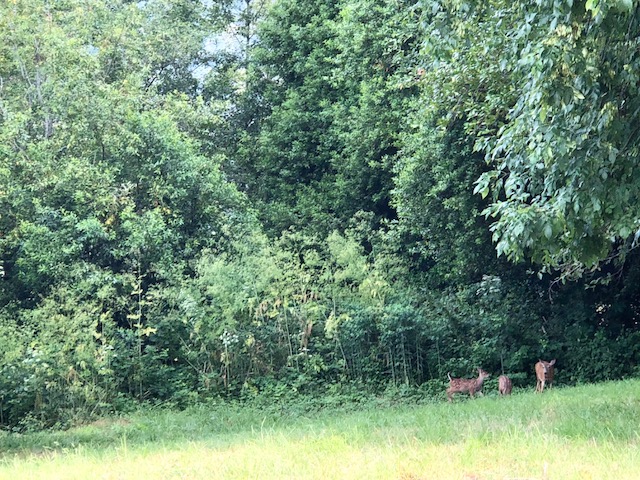
“If you talk to the animals they will talk with you and you will know each other. If you do not talk to them you will not know them and what you do not know, you will fear. What one fears, one destroys.” – Chief Dan George, Tsleil-Waututh Nation, Canada
Native storytellers also captured essential aspects of animal cognition and behavior, partly from close observation and acknowledgement, in many of their stories – aspects now also investigated by research scientists. Crows, for example, are enormously clever, communicative, use tools and recognize individual human faces, skills known and apparent in some century old tales…
LEARN MORE: Brain imaging reveals neuronal circuitry underlying the crow’s perception of human faces
LEARN MORE: Crows Rival Monkeys in Cognitive Capacity
LEARN MORE: Adventure A-Head
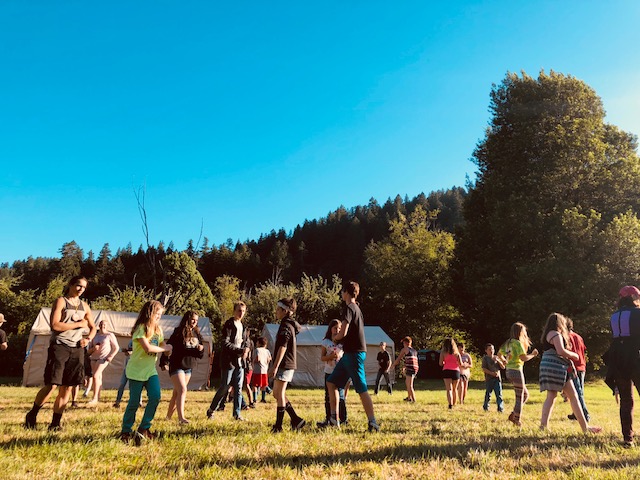
We enjoyed an afternoon of games (including “Sweep the Teepee“), songs, dances and drums!

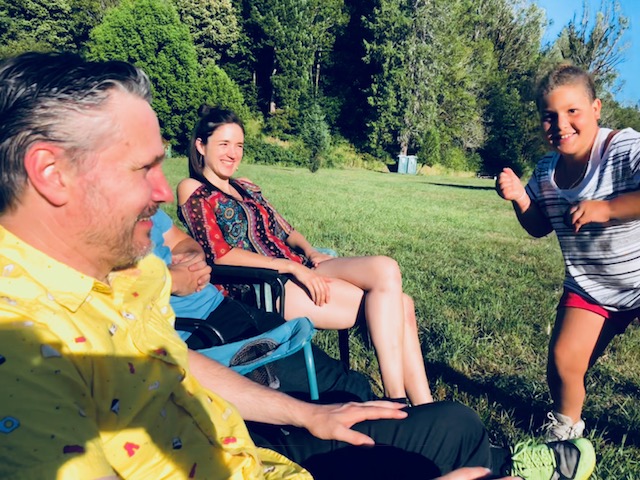
After rousing ceremony and delicious food, we gathered around a campfire at dusk for stories…


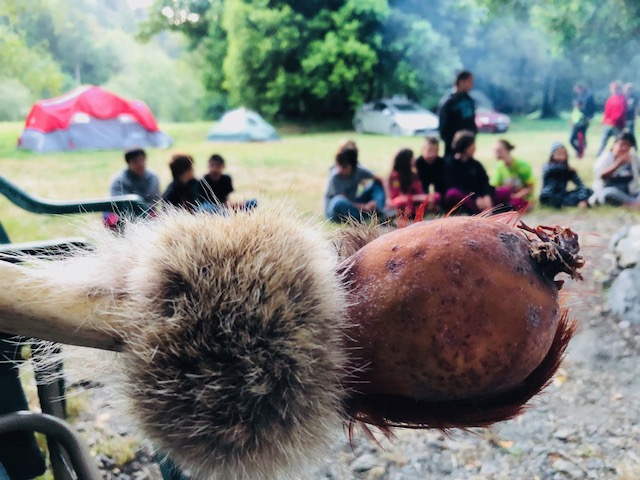
Esther told us a gripping tale of Coyote’s misadventures. Coyote is, like Crow, a clever trickster, and clearly one with a reputation, as few of the other characters were initially willing to help him out. They were right to be wary. For example, he offered the frog sisters some jerky he’d created after transforming a hive of bees – and then turned the jerky right back into buzzing stingers!

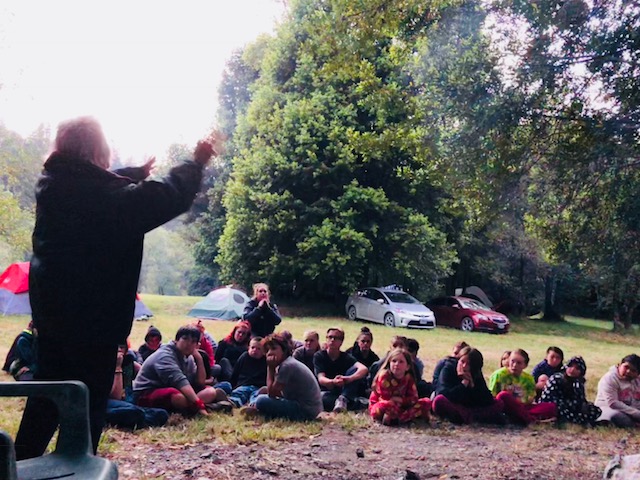
“If you are walking across the camp and trip – of course you need to accept some responsibility but it’s also fine to say that it was Coyote who tripped you up!”
LEARN MORE: Native American Coyote Mythology
LEARN MORE: Oregon Encyclopedia on Coyote

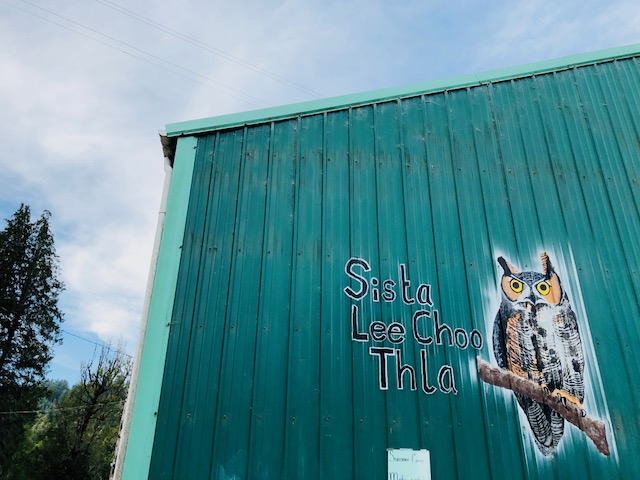
In the morning, after a night of owl cries and screeches from the myrtlewood trees in this Sista Lee Choo Thla (“Place of Many Owls”), we indulged in our shared love for coffee, before gathering in the meadow to greet the new day…
LEARN MORE: Owls of Oregon
“The sun has its own drum contenting itself with the rose
heart it takes into continual rumbling. The connection
of surface and hand. The great head of dark clouds finds
its own place of unraveled repercussions and disruption,
elsewhere, over the tall, staunch mountains of indemnity.”
–Elizabeth Woody, “Illumination”

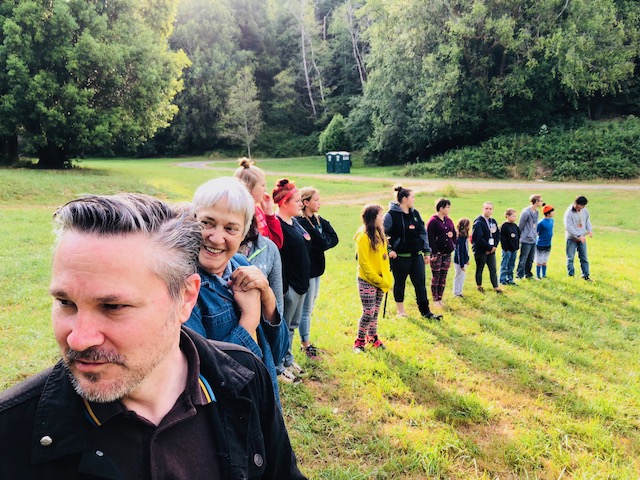

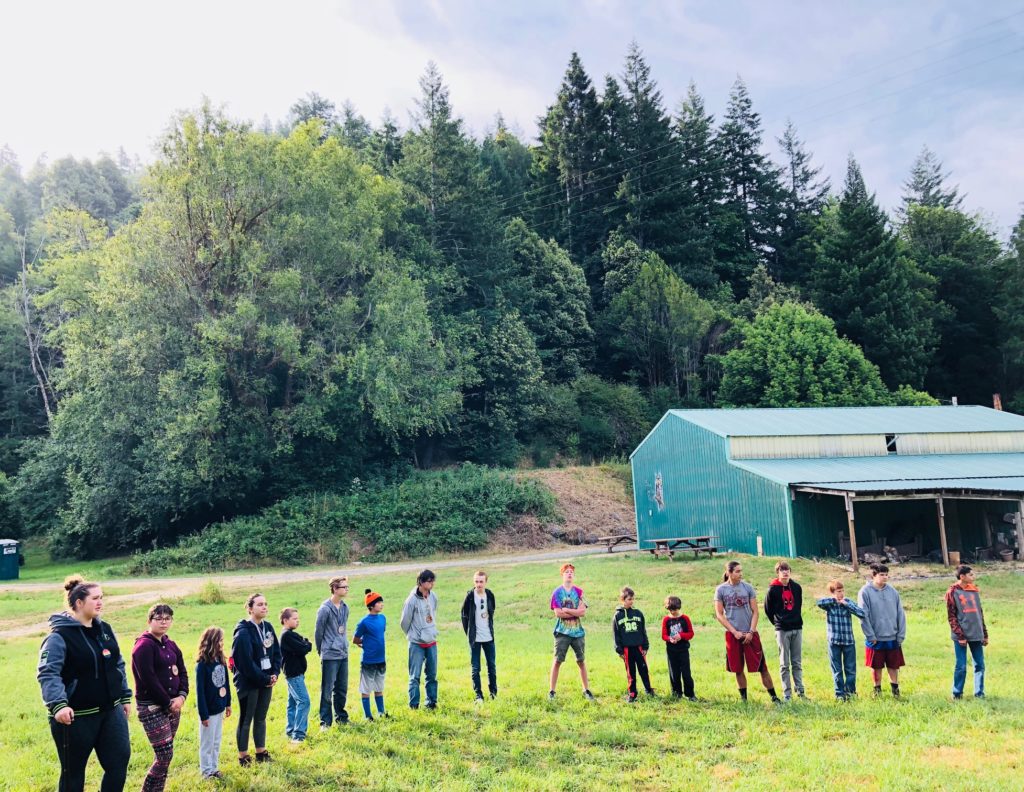
We then introduced our ampukpuk (“ahm-pook-pook” = brains)!
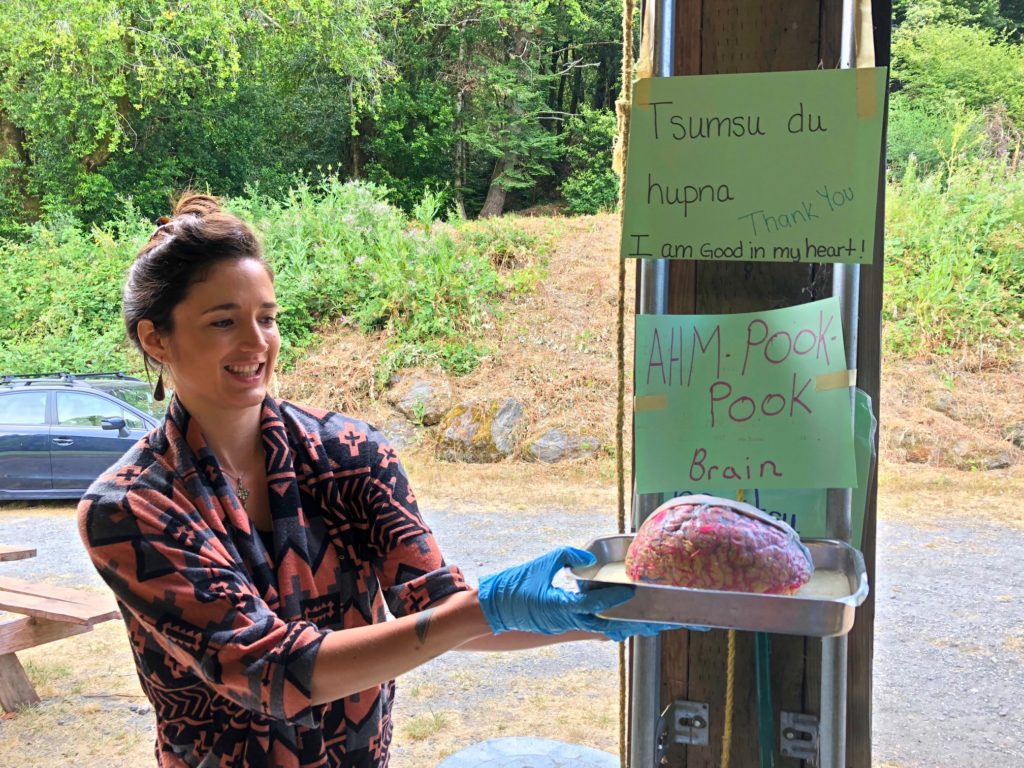

Used nitrile gloves go in the “gitkofin” (trash!)…
We heard many compelling questions, including one about tribal memory, and how past trauma might impact brain development and function in the present day…

We noted that powerful experience can physically change our chromosomes – not by changing the sequence of nucleotides in the DNA (the “code” itself), but by adding or removing specific chemical constituents that alter the future expression of genes. This changes which genes are subsequently expressed, and/or to what extent – thus changing the very structure and function of our brains and bodies…
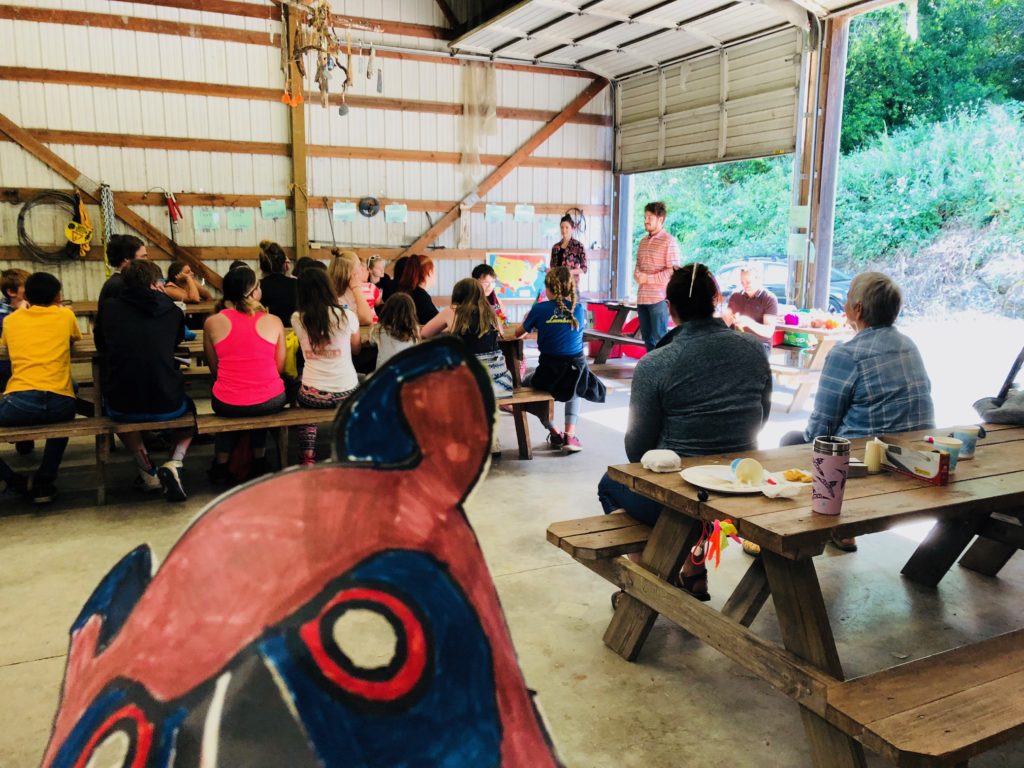
Some of these epigenetic (“above the genome”) alterations are heritable…
LEARN MORE: What Do You Mean, “Epigenetic”?
LEARN MORE: Epigenetics across the human lifespan
LEARN MORE: Topical Review: The Emerging Field of Epigenetics: Informing Models of Pediatric Trauma and Physical Health
LEARN MORE: The intergenerational effects of war on the health of children
LEARN MORE: Epigenetics and memory: causes, consequences and treatments for post-traumatic stress disorder and addiction
LEARN MORE: Epigenetic transmission of Holocaust trauma: can nightmares be inherited?
LEARN MORE: Paternal transmission of early life traumatization through epigenetics: Do fathers play a role?
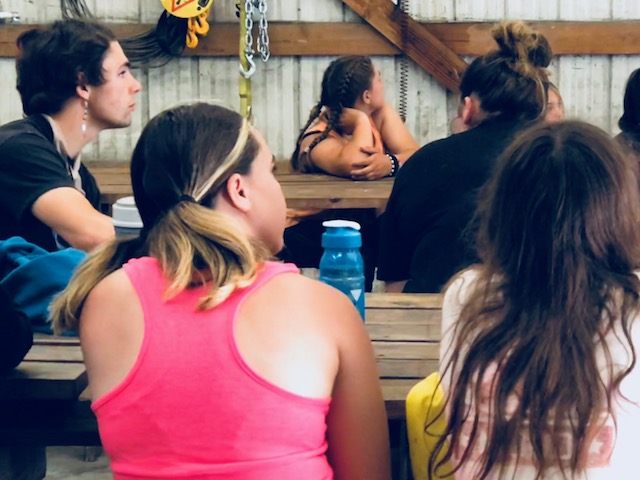
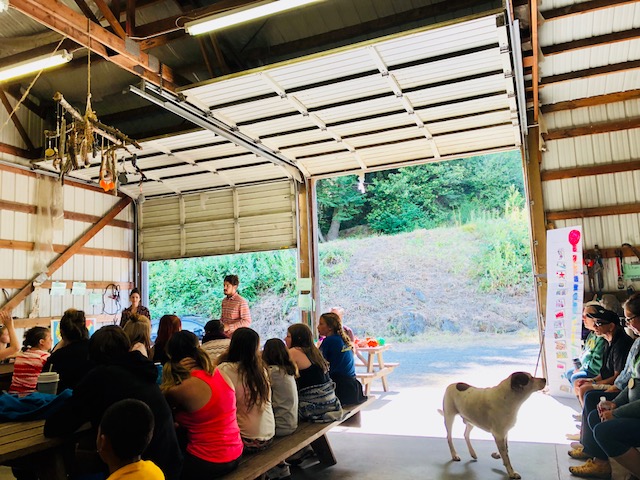
“The past is never dead. It’s not even past.” –William Faulkner
However, this also suggests that current experiences matter, and not just for us. How we act and the challenges and consequences we face and how we respond not only impacts our own brains, but can influence the brains of our children and grandchildren. Positive influences also chemically tag chromosomes, and perhaps some epigenetic changes promote recovery, and resilience.
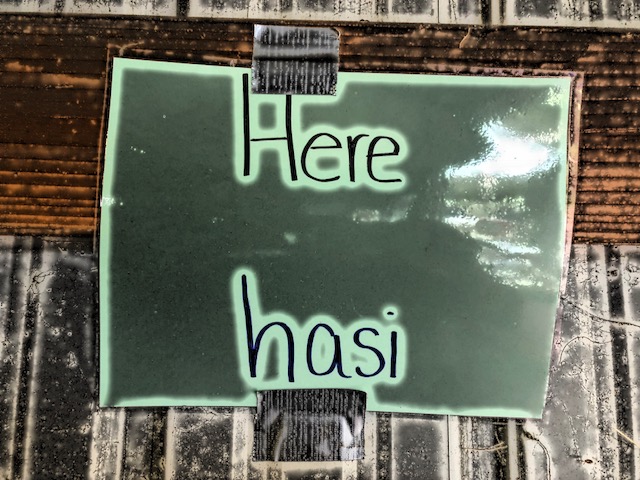

Of course it further suggests that efforts by the Trump administration and their Republican supporters in Congress to tear asylum seeking families apart at the border, for example, may have potentially long-lasting negative impacts. The language used by Trump (e.g., immigrants “pour into and infest our country“) echoes the dehumanization once employed by white immigrant settlers in the Rogue River Valley who aimed to “exterminate” local tribes.

LEARN MORE: Society for Neuroscience statement on family separation
Young people were also curious about the brain and sleep, anxiety, tobacco, alcohol, sexual orientation and gender expression.

Diversity of gender identity and sexual orientation has roots in the brain, of course, including exposure to critical hormones (e.g., testosterone, estrogen) in the womb. Yet there are multiple development steps, both early ones that significantly shape our bodies, and later ones which substantially change our brains…

Hormones don’t tell the whole story, either, as additional genetic and environmental factors can contribute to the morphological, physiological and behavioral differences that contribute to who we are.
LEARN MORE: Sexual differentiation of the human brain
LEARN MORE: A Review of the Status of Brain Structure Research in Transsexualism
LEARN MORE: Sexual Orientation Related Differences in Cortical Thickness in Male Individuals
LEARN MORE: Becoming two-spirit: Gay identity and social acceptance in Indian country
LEARN MORE: Language, culture, and Two-Spirit identity
LEARN MORE: Two Spirits
LEARN MORE: Northwest 2-Spirit Society
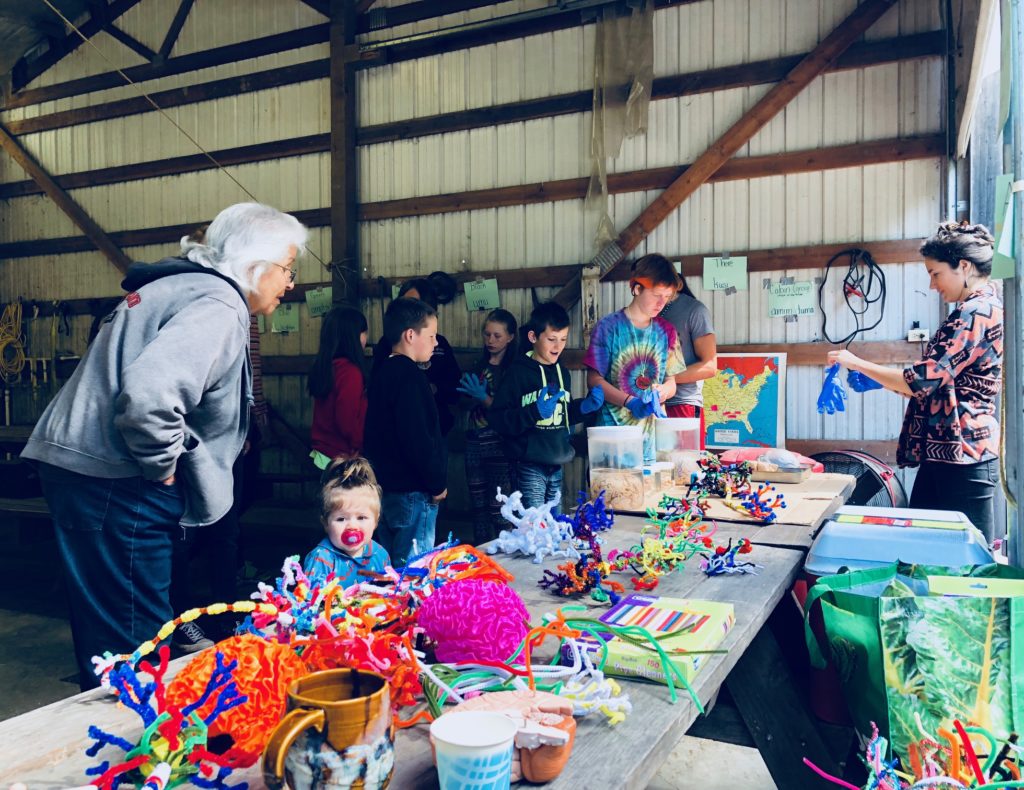
We took more questions while holding ampukpuk…
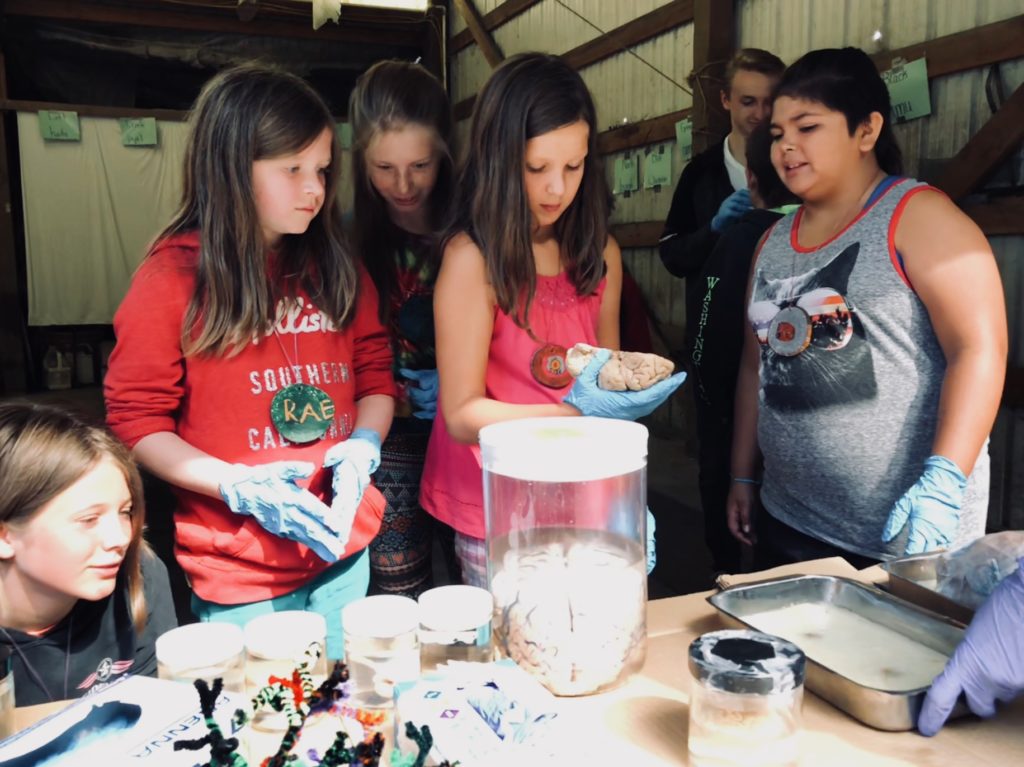
And also while examining the brains of multiple species, including chicken, ferret, rhesus macaque, pig, sheep, raccoon – and fellow human!
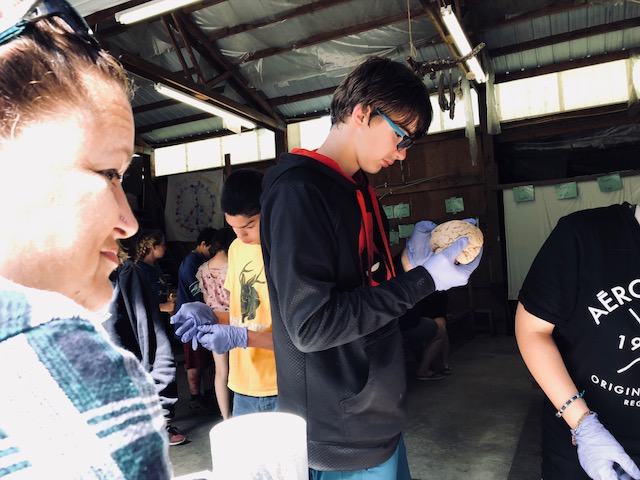




We also made brain cells out of the pipe cleaners we’d carried to southern Oregon…

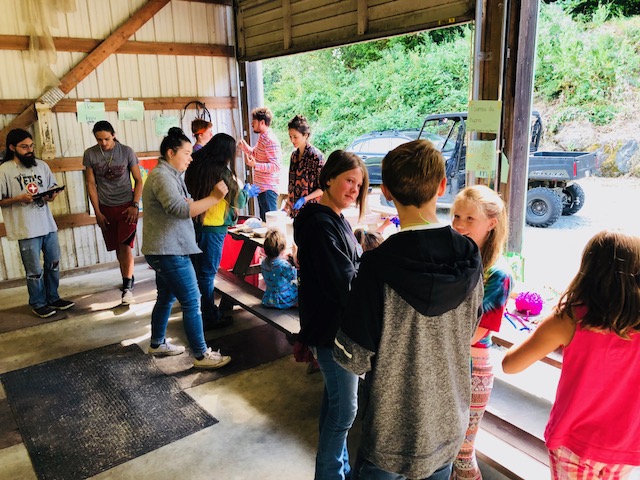

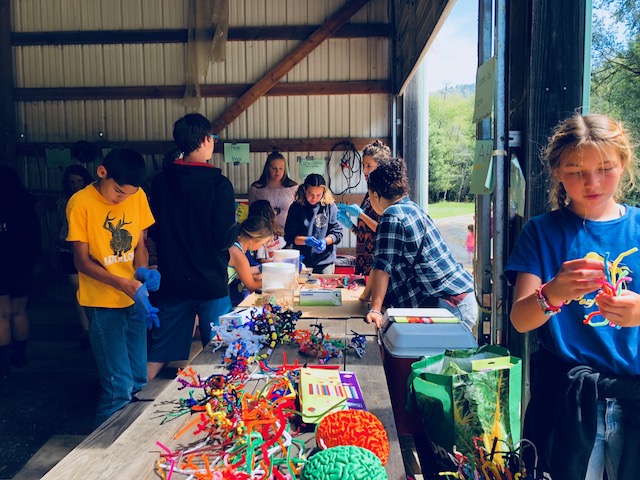
LEARN MORE: NW Noggin STEAM Art Projects

Tsumsu du hupna! We are indebted to Esther, James and the staff and students of this remarkable community at Mservey Meadows, for offering their stories and songs, and the chance to share ours.


We left a pipe cleaner neuron with Esther & the kids!
LEARN MORE ABOUT OUR OUTREACH PLANS FOR FALL..!
Synapses & Stories: Coyote, Grizzly & their Brains!
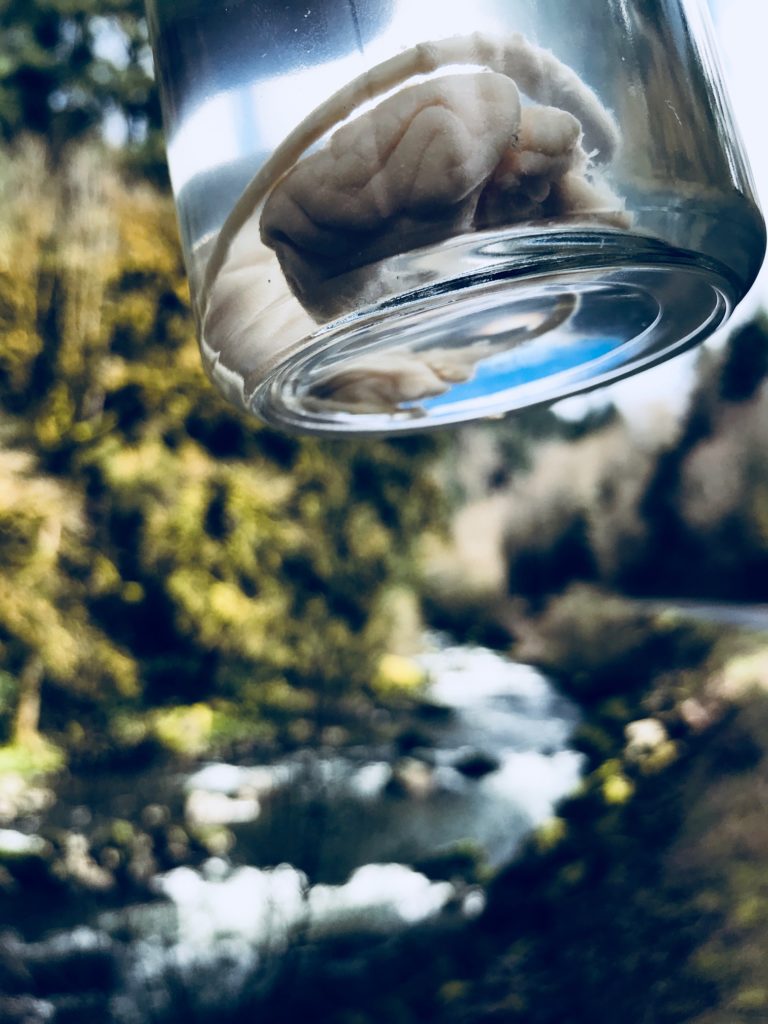
LEARN MORE: Imagination, Stories & Brains


